Waste Oil Tanks
The State Water Board Evaluation staff utilizes the UST Facility/Tank Data Download to assess whether the CUPA is accepting CERS submittals for used oil UST systems incorrectly utilizing both secondary containment and overfill prevention equipment exemptions. The CUPA should verify the following when reviewing over the Tank Information page:
- Does the used oil UST system have single-walled vent piping or tank risers?
- Is the overfill protection method marked as exempt?
If the answer to both is yes, the CUPA must either require the installation of overfill prevention equipment or secondary containment construction for the single-walled vent and tank riser.
For more information, refer to LG 150-3 and Single-Walled Vent or Riser Piping webpages.
UST Facility/Tank Data Download – Waste Oil Tank Overfill Prevention Equipment Data Analysis
How to obtain and set up the report from CERS
1. Log into CERS and go to Reports
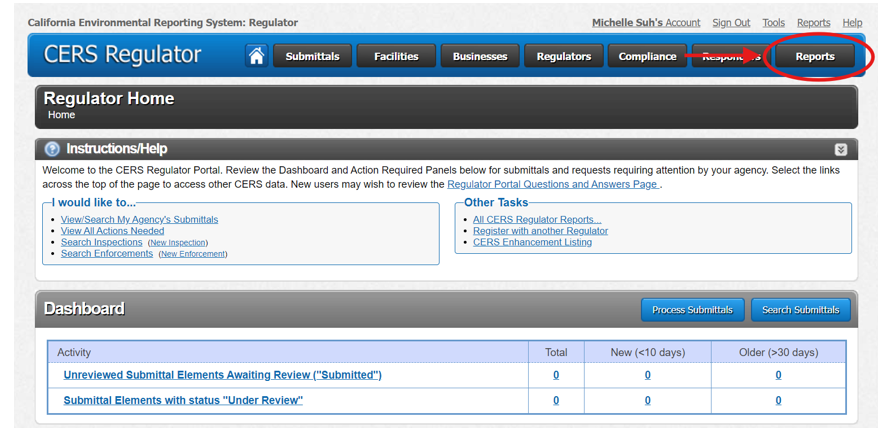
2. Select UST Facility/Tank Data Download
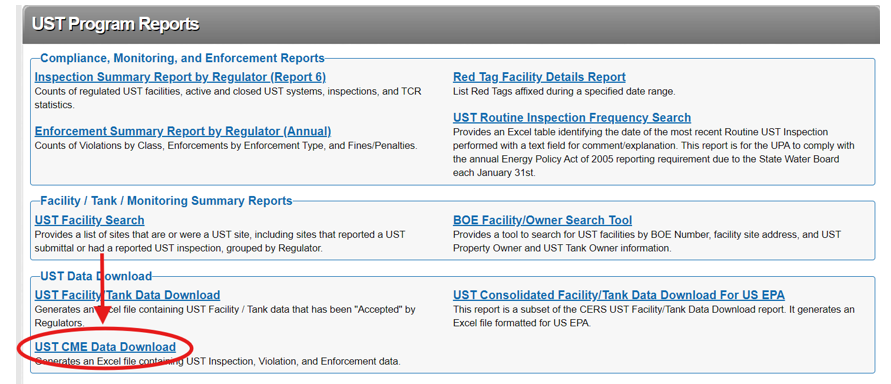
3. Select the jurisdiction from the Regulator drop down and select Generate Excel Report. An Excel document will be downloaded to your computer.
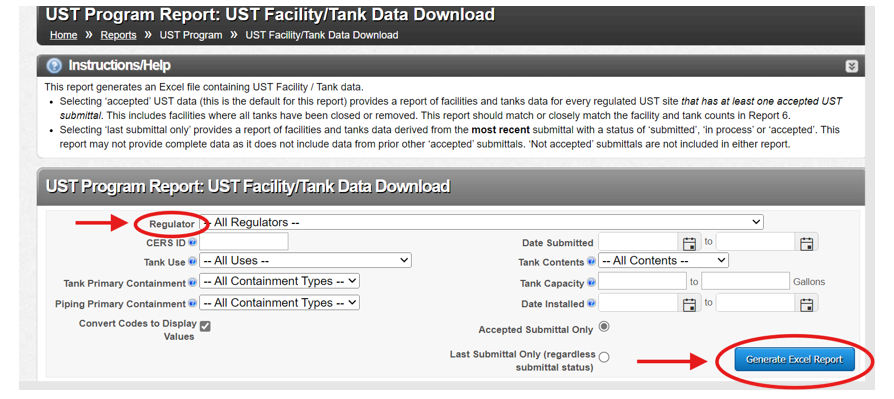
4. Open the excel document and go to the UST Tank & Monitoring Plan Info tab
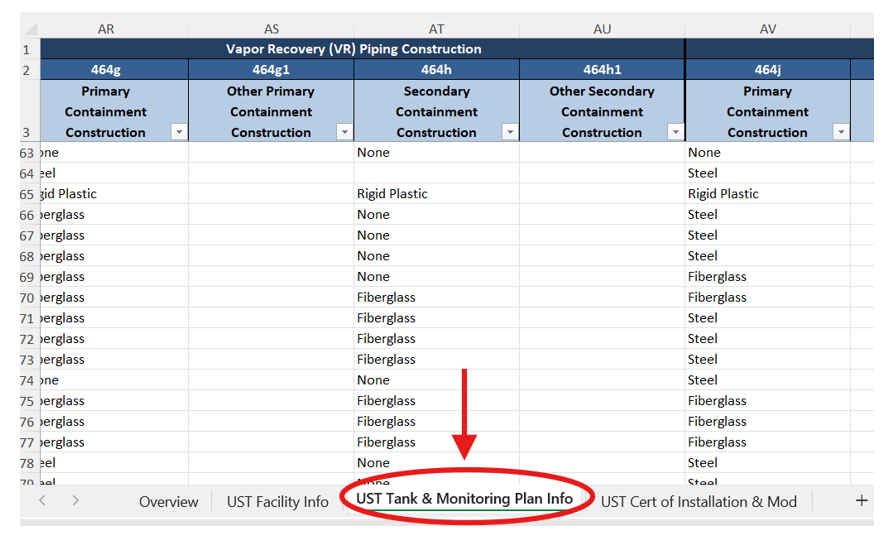
5. Select row 3 (highlight entire row), go to the Data tab at the top, and then select Filter. You should now see a drop-down arrow (for filtering) in each of the columns.
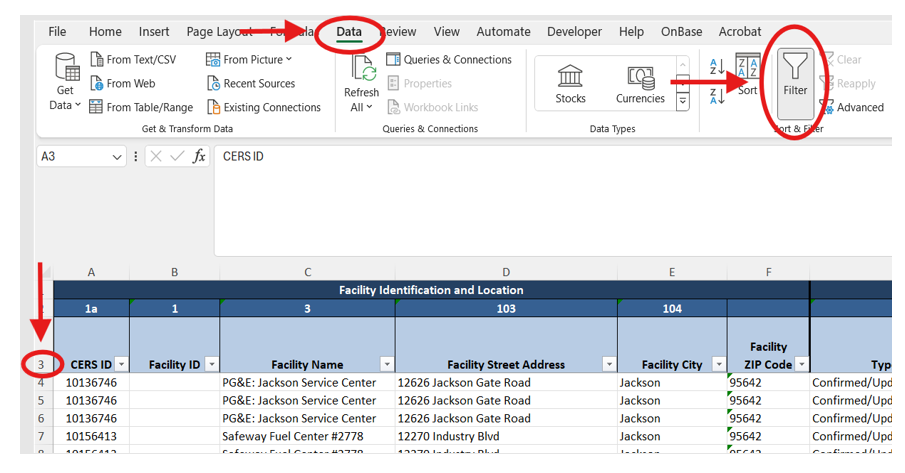
How to filter the data
1. Find column 430 (Type of Action) and deselect UST Permanent Closure on Site and UST Removal
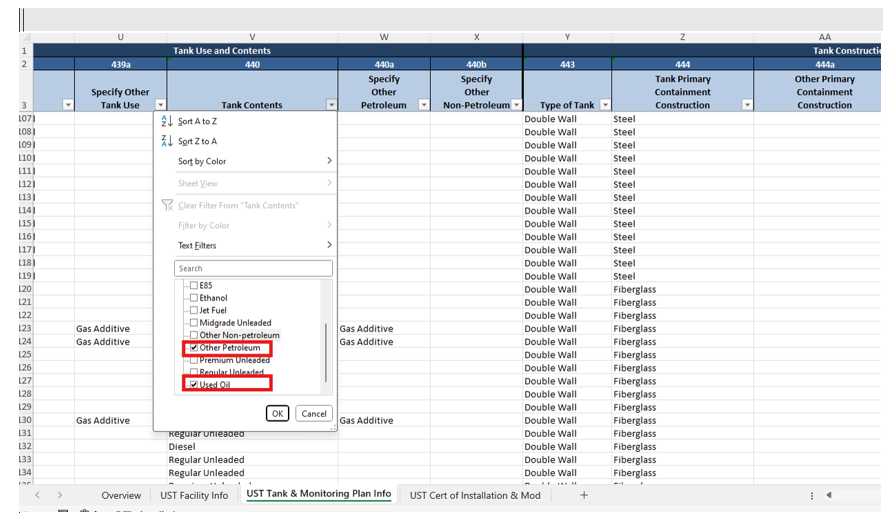
2. Find column 440 (Tank Use and Contents) and filter for Used Oil or any other tank content that may appear to be used oil
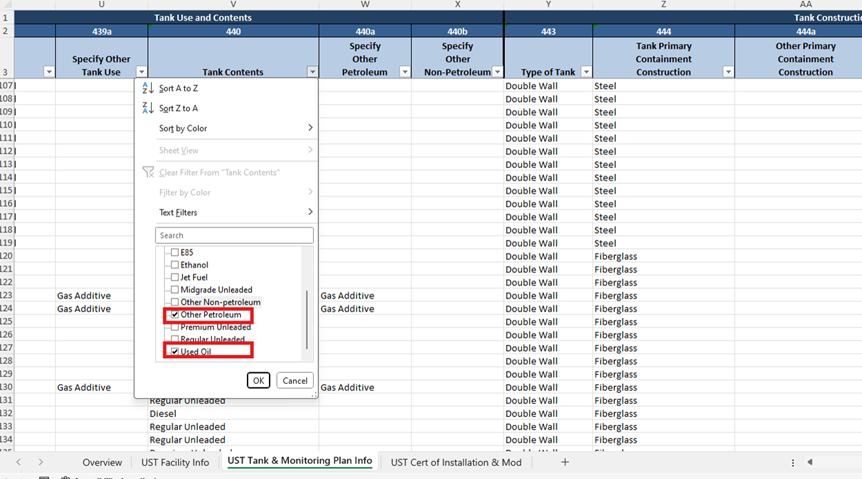
3. Find columns 452a, 452b, 452c, and 452d (Tank Overfill Prevention) and filter for the following.
- 452a: No
- 452b: No
- 452c: No
- 452d: Yes
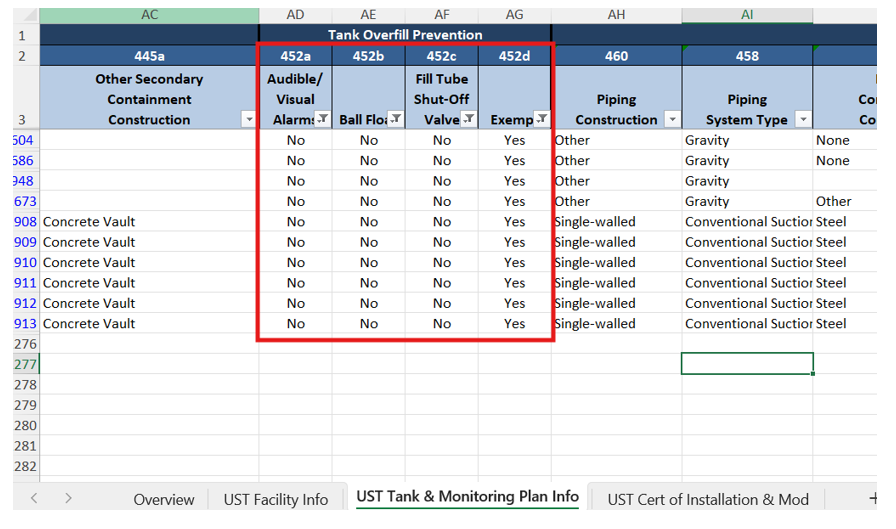
4.Find column 464f (Vent Piping Construction) and filter for None. This identifies UST systems with single-walled vent piping.
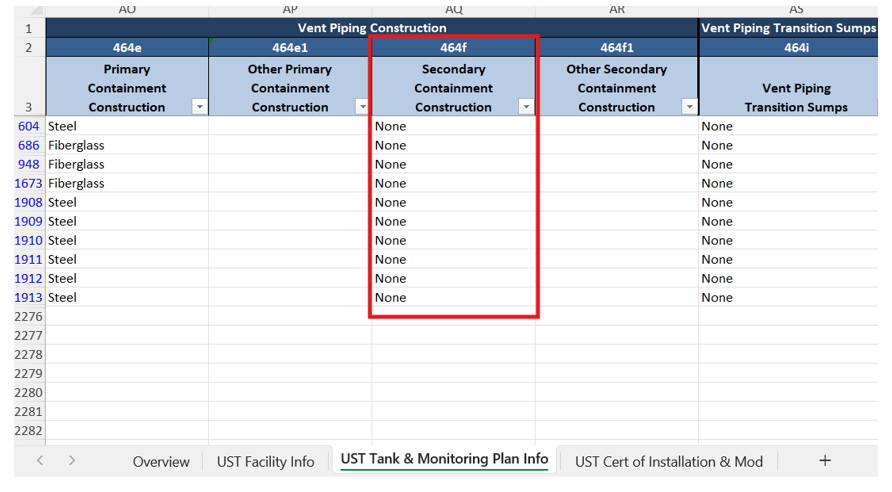
5. Clear filter for column 464f (Vent Piping Construction)
- Click on the drop-down arrow in the column header
- From the drop-down menu, select "Clear Filter from Secondary Containment Construction"
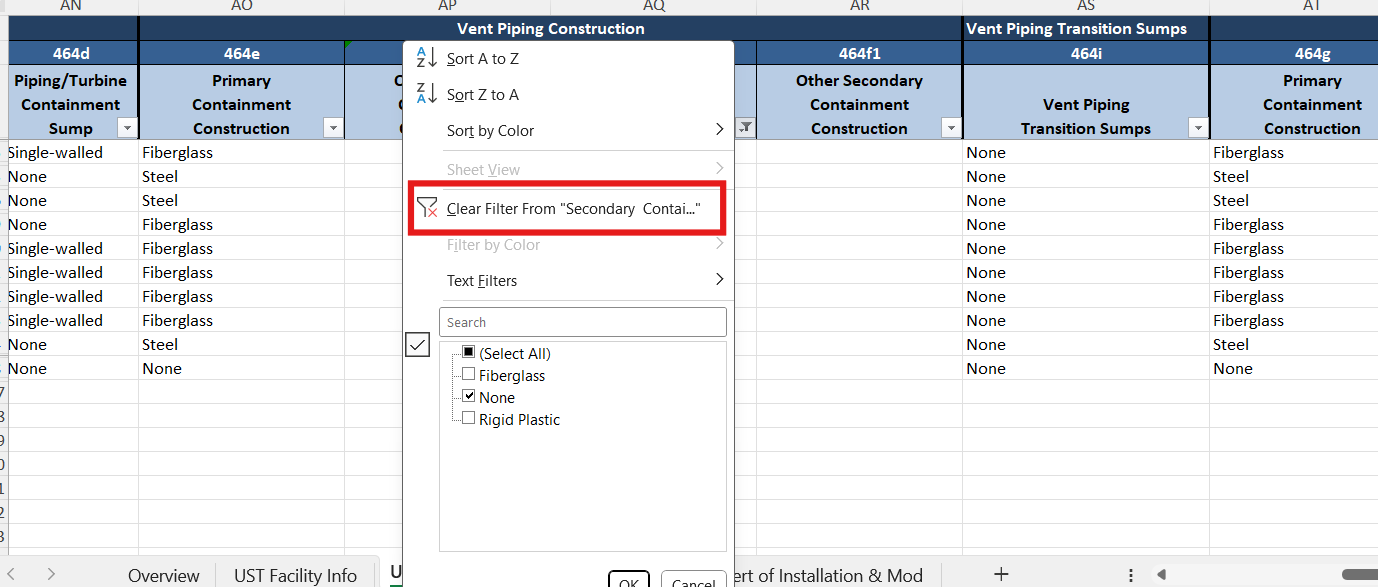
6. Find column 464k (Riser/Fill Pipe Piping Construction) and filter for None. This identifies UST systems with single-walled riser/fill piping.
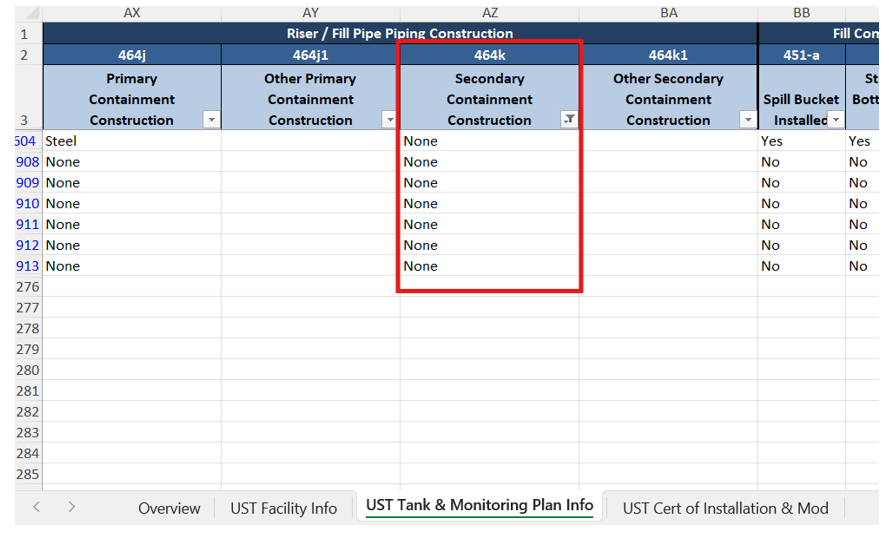
The Evaluation Staff will cross reference the USTs in this section with violation and enforcement data to determine if the CUPA consistently cites or requires correction of construction violations.


